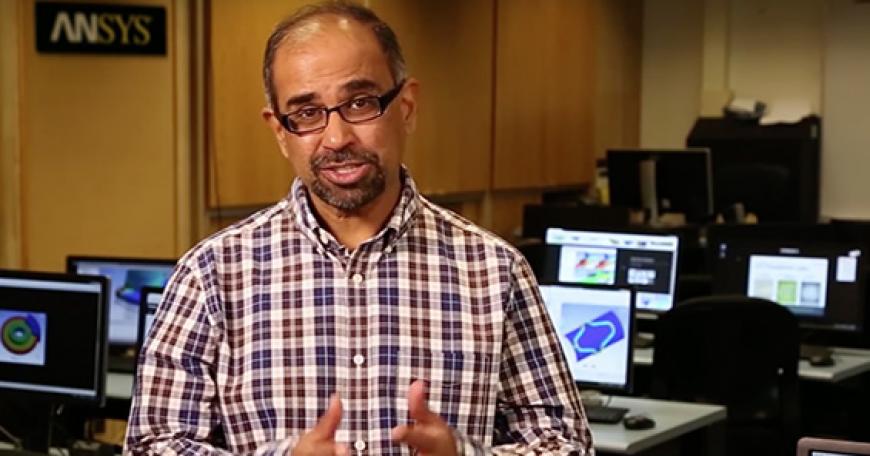
Rajesh Bhaskaran on Breaking Down Conventional Engineering Education
In engineering classes, students often experience the various topics they learn, such as solid mechanics, dynamics, and heat transfer, as fragmented entities, struggling to see how they connect. However, Dr. Rajesh Bhaskaran, a professor of Mechanical and Aerospace Engineering at Cornell University, is creating a new way of teaching that breaks down conventional ways of learning engineering topics. He spoke about this in his March 6 xTalk, “A New Paradigm in Engineering Education Using Two Disruptive Technologies: Simulations & Online Learning.” How exactly does his new paradigm work to disrupt traditional engineering education?
It has a holistic nature.
Bhaskaran introduced ANSYS simulation tools into Cornell engineering classes, connecting a wide range of classes usually taught in isolation and providing students with a bigger picture of what they’re learning. The simulations bridge the mathematics and physics that students learn with their applications and also complement experiments done in class, allowing students to understand how their results make sense in the real world.
Simulations.
The simulations help students think less like novices, as they do in traditional classes with content-based learning, and more like experts, with problem-based learning. Students are guided step-by-step through the process of expert thinking, starting with pre-analysis of the problem and ending with verification and validation, where they ask whether the right model was solved and whether the model was solved correctly.
Online Learning and MOOCs (Massive Open Online Courses).
Students often talk about how difficult or easy a certain class is, but rarely are they heard talking about how fun a class is. In his MOOC, Bhaskaran uses short videos and overlays annotations onto the presentation or ANSYS simulator to show students the big picture in an intuitive fashion. He aims to act as less of a “sage on the stage” and more of a “guide by the side” to emphasize active learning and guide exploration, and students have reported actually enjoying learning this way.
It scales well.
MOOCs and online learning lead to mass customization and a flexible learning environment that can be updated as needed. As Bhaskaran describes it, one person is teaching thousands, one at a time, which makes for a unique learning experience unlike traditional engineering education. 5. Students gain industry knowledge. In his MOOC, Bhaskaran brings in industry experts, such as aerospace engineers at SpaceX, to talk about how they reduce complicated models into easier problems working with ANSYS simulators on a daily basis. It’s a win-win situation, as students feel more engaged and knowledgeable in applying these skills to hands-on experiences outside of class, and companies appreciate this.
Students are ultimately the agents of change, and they want to see such technologies being used to gain a deeper understanding of engineering concepts extending beyond the classroom. We can only hope that this ignites a movement towards using this new paradigm of learning that will allow students to take charge of their engineering education and learn the skills they need for real life.
 Melissa Cao is an MIT sophmore majoring in economics
Melissa Cao is an MIT sophmore majoring in economics

